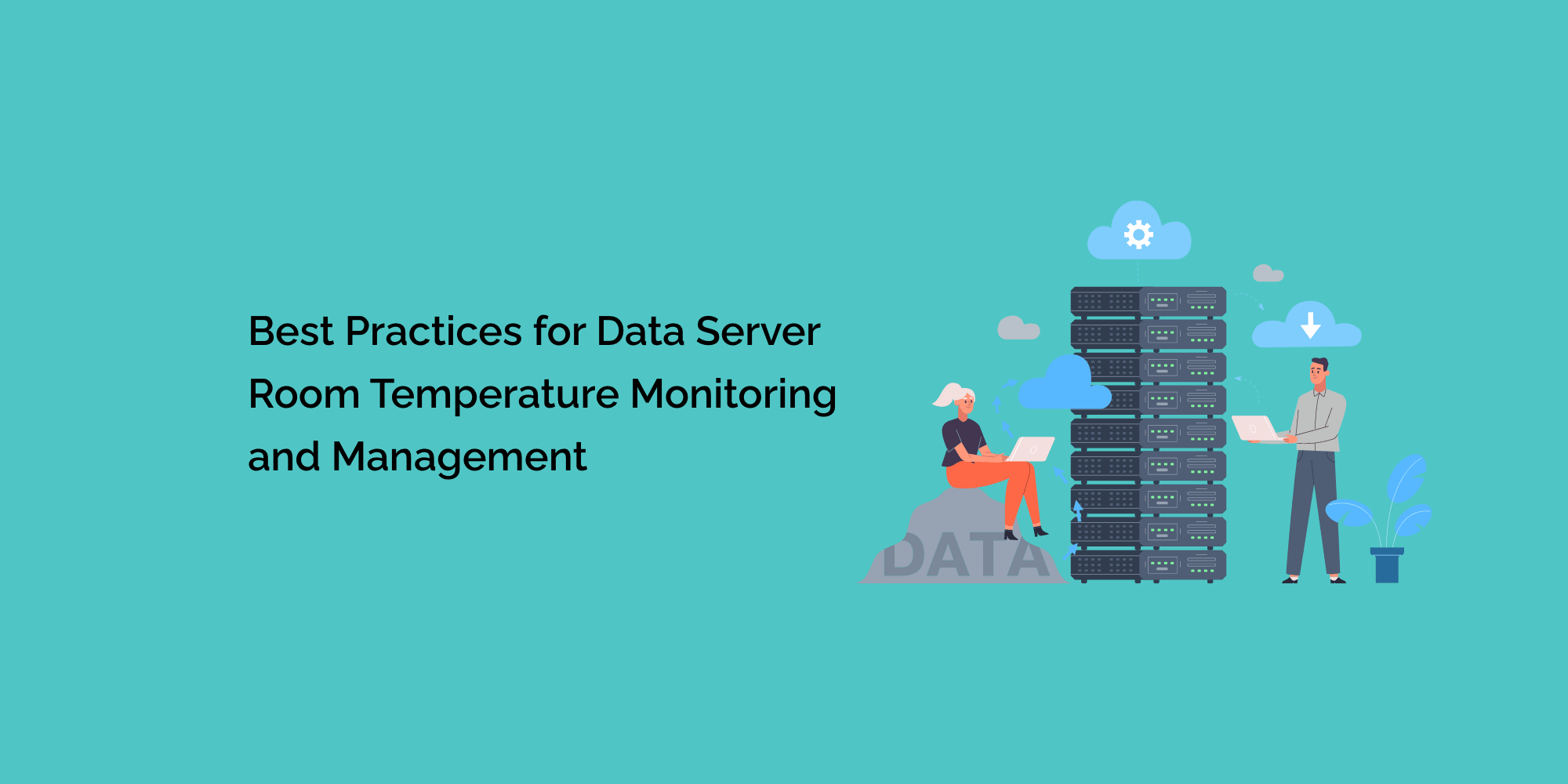Data servers form the backbone of modern businesses, facilitating the storage and processing of vast amounts of critical information. Maintaining optimal conditions within the server room is crucial for ensuring the reliable performance and longevity of these essential systems. Temperature monitoring and management play a vital role in safeguarding data server operations. In this comprehensive blog, we will explore the best practices for data server room temperature monitoring and management, helping businesses avoid costly downtime, hardware failures, and potential data loss.
The Importance of Data Server Room Temperature Management:
Data servers are highly sensitive to temperature fluctuations, and even minor deviations from the optimal range can impact their performance and stability. Maintaining a controlled and stable environment within the server room is essential for several reasons:
-
Hardware Reliability: Operating servers within the recommended temperature range enhances the reliability and lifespan of hardware components, such as CPUs, hard drives, and memory modules.
-
Preventing Overheating: Overheating can lead to thermal throttling, where servers slow down to avoid damage. This can result in decreased processing speeds and delays in data retrieval.
-
Reducing Downtime: Temperature-related issues are a significant cause of server downtime, leading to lost productivity, revenue, and potential customer dissatisfaction.
-
Data Protection: Maintaining appropriate temperatures safeguards critical data from potential damage caused by temperature-related hardware failures.
- Energy Efficiency: Efficient temperature management can lead to reduced energy consumption and lower operating costs.
The Role of Temperature Monitoring in Data Server Rooms:
Proactive temperature monitoring is crucial for identifying potential issues before they escalate into critical problems. Here's why temperature monitoring matters:
-
Early Detection of Problems: Temperature monitoring allows administrators to identify rising temperatures early on, enabling prompt corrective actions.
-
Preventing Overheating: Monitoring helps prevent servers from reaching dangerous temperatures, reducing the risk of overheating and hardware failures.
-
Maintaining Optimal Performance: By ensuring servers operate within the recommended temperature range, administrators can maintain optimal performance and efficiency.
-
Predictive Maintenance: Temperature data can be used for predictive maintenance, enabling administrators to schedule proactive maintenance and avoid unexpected failures.
- Real-Time Alerts: Monitoring systems can send real-time alerts when temperatures deviate from the optimal range, allowing administrators to take immediate action.
Best Practices for Data Server Room Temperature Monitoring:
To effectively monitor data server room temperatures, follow these best practices:
-
Implement Redundant Monitoring: Install redundant temperature monitoring systems to ensure continuous monitoring in case of system failures or outages.
-
Use Remote Sensors: Place remote temperature sensors in strategic locations within the server room to monitor temperature variations effectively.
-
Set Threshold Alerts: Configure temperature monitoring systems to send alerts when temperatures exceed or fall below the optimal range, based on specific threshold levels.
-
Monitor Humidity Levels: Monitor humidity levels in addition to temperature, as high humidity can lead to condensation and potential water damage.
-
Integrate with Monitoring Platforms: Integrate temperature monitoring systems with existing infrastructure management platforms for centralized and streamlined data analysis.
-
Periodic Calibration: Periodically calibrate temperature sensors to ensure accuracy and reliability.
- Monitor Environmental Conditions: In addition to temperature, monitor other environmental factors such as airflow and ambient temperature outside the server room.
Temperature Management Best Practices:
Effective temperature management goes hand in hand with monitoring. Follow these practices to maintain optimal conditions within the server room:
-
Ensure Proper Airflow: Organize server racks to allow for proper airflow and prevent hotspots.
-
Optimize Air Conditioning: Regularly maintain and optimize air conditioning systems to ensure efficient cooling.
-
Use Containment Solutions: Implement hot and cold aisle containment to prevent the mixing of hot and cold air, enhancing cooling efficiency.
-
Implement Cold Aisle-Containment: Cold aisle-containment uses barriers to contain and direct cold air to the front of the servers, improving cooling efficiency.
-
Use Energy-Efficient Cooling: Consider using energy-efficient cooling solutions to reduce energy consumption.
-
Monitor Power Usage Effectiveness (PUE): Track the PUE to evaluate the efficiency of the data center's cooling infrastructure.
- Regular Maintenance: Perform regular maintenance of cooling systems, including filter replacements and coil cleaning.
Data Center Environmental Monitoring:
Comprehensive data center environmental monitoring involves monitoring various factors beyond temperature, including:
-
Humidity: Maintain optimal humidity levels to prevent condensation and static electricity buildup.
-
Air Quality: Monitor air quality to detect the presence of dust or other contaminants that could affect server performance.
-
Water Leakage Detection: Implement water leakage detection systems to protect against potential water-related hazards.
-
Power Monitoring: Monitor power usage to identify any irregularities or potential power issues.
- Fire Detection: Install fire detection systems to detect early signs of fire and prevent catastrophic damage.
Regular Data Analysis:
Regularly analyze the temperature and environmental data collected from monitoring systems to identify trends and potential issues. Data analysis can provide valuable insights into temperature patterns and allow for proactive maintenance and improvements.
Disaster Preparedness:
Develop a comprehensive disaster preparedness plan that includes protocols for temperature-related emergencies, such as cooling system failures or unexpected heat spikes.
Training and Awareness:
Train data center staff on temperature monitoring procedures, emergency response plans, and the importance of proactive temperature management. Creating awareness among staff fosters a culture of vigilance and responsible temperature management.
Conclusion:
Effective temperature monitoring and management are critical for maintaining the health and reliability of data servers. Proactive temperature monitoring enables early detection of issues, preventing overheating, reducing downtime, and protecting critical data. By implementing best practices for temperature monitoring and management, businesses can ensure their data centers operate at peak efficiency, avoid costly downtime, and build a reputation for reliable and uninterrupted services. With a comprehensive approach to data server room temperature monitoring and management, businesses can confidently embrace the future of data-driven operations and maintain a competitive edge in the digital landscape.








